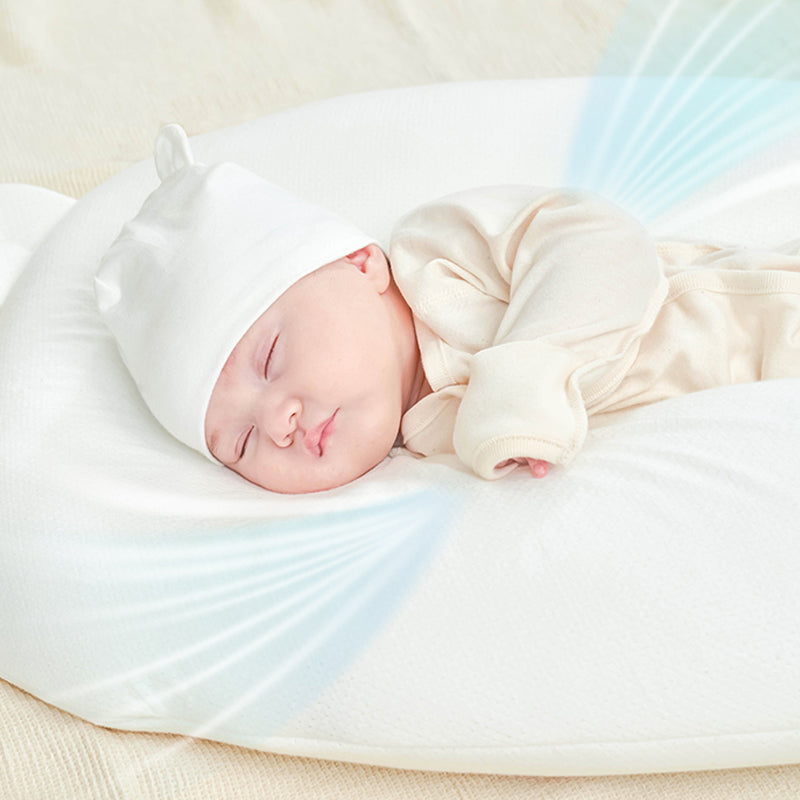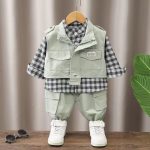When Is It Safe to Introduce a Pillow?
Determining the right time for a toddler to start using a pillow is important. Experts, like the American Academy of Pediatrics, advise against pillows for kids under two. Pillows can increase the risk of suffocation in young children, especially when they’re in cribs. After the toddler’s second birthday, the risk of Sudden Infant Death Syndrome (SIDS) decreases significantly. This makes it a safer time to consider a pillow.
Once toddlers move from cribs to beds, they’re generally ready for more bedding. But, safety should always come first. Pillows meant for adults are not suitable due to their size and softness. When your toddler transitions to a bed, a small and firm pillow is a safer choice. Look for pillows designed specifically for young children, as they offer the necessary support without extra hazards.
In summary, wait until your child is over two years old and out of the crib before introducing a pillow. This ensures they are developmentally ready and reduces the risk of accidents. Always put safety first when it comes to your toddler’s sleep environment.
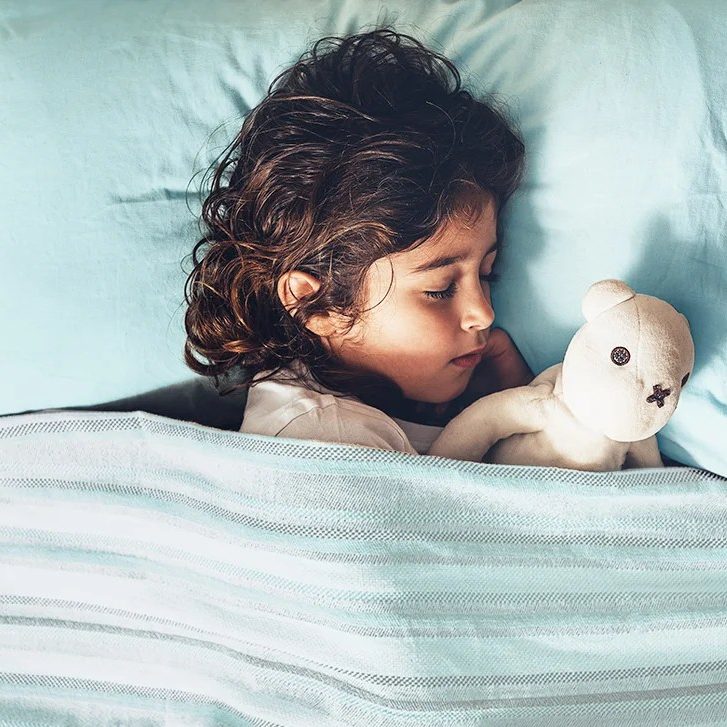
Signs Your Child May Be Ready for a Pillow
Recognizing the signs your child may be ready for a pillow is key. Here are indicators:
- Transition to Toddler Bed: If your child has moved to a bigger bed, it may be time.
- Seeking Comfort: If they rest their head on stuffed toys or other soft items, they might be ready.
- Discomfort: A toddler who seems uncomfortable or restless might enjoy a pillow.
- Asking for a Pillow: A clear sign is if your child starts asking to use a pillow.
These signs can suggest your toddler may benefit from the added comfort of a pillow. Always watch for your child’s readiness cues and discuss with a pediatrician for the best advice. Once these signs appear, and they are over two years old, consider pillow introduction carefully. Choose a pillow designed for toddlers and make sure it is firm and flat. Safety comes first so ensure you monitor your child’s adaptation to the new pillow.
Choosing the Right Pillow for Your Toddler
Selecting a safe and comfortable pillow for your toddler is crucial. As you shop, prioritize these key features:
Important Pillow Characteristics
Go for a pillow that is:
- Small and firm: These features prevent your toddler from sinking into the pillow, reducing the risk of suffocation.
- Flat: A less lofty pillow aligns better with your child’s sleeping posture.
- Toddler-sized: A pillow proportionate to your child’s body offers the right support level.
- Free of loose fillings: Avoid pillows with small beads or pellets that could pose a choking hazard.
These characteristics help maintain a safe sleep environment for your child. A suitable pillow supports without introducing new risks.

Materials and Allergenic Considerations
Choosing non-toxic, hypoallergenic materials is also essential for your toddler’s health. Here are some points to remember:
- Non-toxic materials: Pillows without harmful chemicals protect your child from potential health risks.
- Hypoallergenic filling: Options like polyester fiberfill or PLA are less likely to trigger allergies.
- Washable covers: Pick a pillow with a removable cover for easy cleaning.
- Breathable fabric: Fabrics like cotton allow for airflow and help prevent overheating.
Careful selection of materials ensures comfort and safety for your toddler throughout the night. By focusing on these features, you can find a pillow that will help your child sleep safely and soundly.
The Role of Pillows in Sleep Comfort and Development
The right pillow can add comfort and support a child’s rest. Unlike adults, small children often sleep deeply without pillows. However, as toddlers grow, they may find a pillow enhances their sleep quality.
A proper pillow can aid in proper spinal alignment during sleep. This supports the ongoing development of a child’s neck and spine. A low and firm pillow is key for young children. It should be just enough to lift their head slightly. Too high or soft can do harm rather than good.
While comfort is important, safety is the top priority. Parents must ensure the pillow is the right size and firmness. The material should be hypoallergenic and non-toxic. This is to prevent allergies or health problems.
Introducing a pillow at the right time can also help in transition stages. For example, moving from crib to bed can be a big change. A small, flat pillow might make this shift smoother for some toddlers.
Remember, a pillow is not a need for toddlers, but a potential benefit when introduced safely. Always follow guidelines from pediatric expertise. This ensures that your toddler’s night is both cozy and safe.
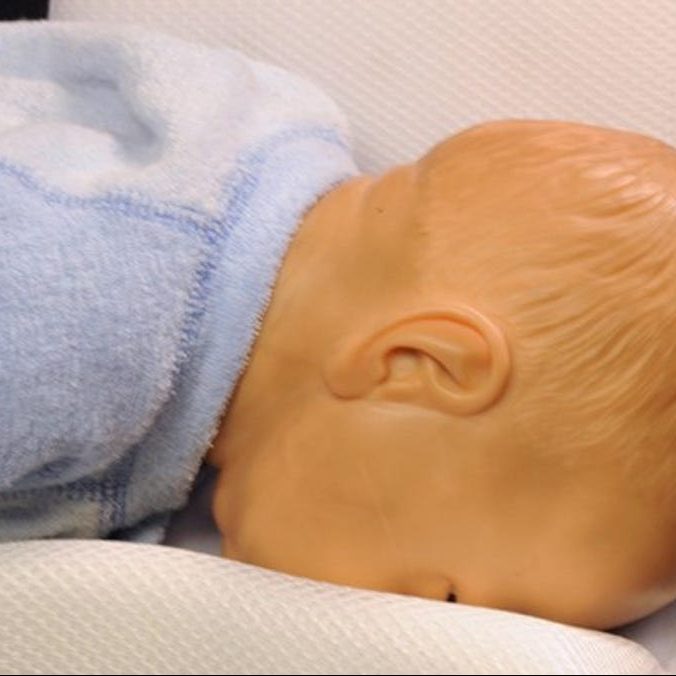
Safety Tips and Best Practices for Pillow Introduction
When introducing your toddler to their first pillow, following safety guidelines is vital. Make your toddler’s transition to using a pillow both safe and comfortable with these tips:
- Wait Until 2 Years Old: Do not introduce a pillow before your child is two years old to reduce SIDS risks.
- Assess Readiness: Look for signs of readiness, such as discomfort without a pillow or asking for one.
- Talk to a Pediatrician: Always consult with a pediatrician before making any changes to your child’s sleep environment.
- Choose the Right Pillow: Select a small, firm pillow to prevent the risk of suffocation and ensure proper alignment.
- Keep It Simple: Start with just a pillow; avoid adding other loose bedding items that could pose a risk.
- Monitor Closely: Watch your child closely after introducing the pillow to ensure they are using it safely.
- No Stuffed Animals or Blankets: For at least the first year, do not place stuffed toys or blankets in the crib to avoid suffocation hazards.
Remember that safety comes first. A carefully chosen, child-appropriate pillow can enhance your toddler’s comfort without compromising their safety.
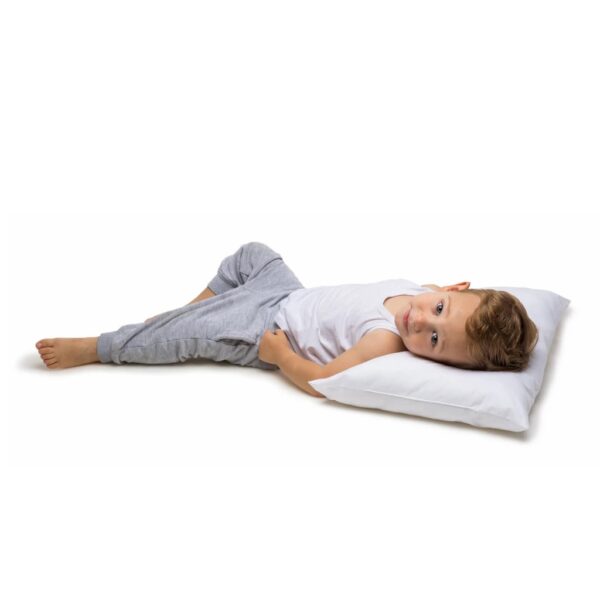
Transitioning to a Pillow: Making It a Smooth Experience
Introducing your toddler to their first pillow should be a careful and gradual process. Here are steps to make it smooth:
- Start with Naptime: Begin during naps to observe their comfort and safety.
- Choose a Special Pillow: Let your child select a pillow with their favorite colors or characters.
- Involve Your Toddler: Make it exciting by involving them in choosing the pillow or cover.
- Ease into It: Place the pillow in the bed a few days before using it so they get used to it.
- Monitor Sleep Quality: Watch if the pillow improves their sleep or if they push it away.
- Ensure Comfort: Check that they can lie down and get up easily with the pillow in place.
By following these steps, you smoothly integrate a pillow into your toddler’s sleep routine, ensuring comfort and maintaining safety.
Common Questions and Answers about Toddlers and Pillows
Parents often have queries when it comes to toddler sleep and pillows. Here are answers to common questions:
- At what age can a toddler sleep with a pillow?
Experts recommend waiting until after the second birthday. This reduces SIDS risks.
- How do I know my toddler is ready for a pillow?
Look for signs like lying on soft items, showing discomfort, or asking for a pillow.
- What kind of pillow is best for a toddler?
Choose a small, firm, flat pillow designed for young children. Ensure it’s not too soft.
- Are there special materials I should look for in a toddler’s pillow?
Opt for hypoallergenic, non-toxic materials. Washable covers are a bonus for easy cleaning.
- Can pillows help with my toddler’s sleep?
When introduced correctly, pillows may improve comfort and support healthy sleep postures.
- What safety tips should I follow when giving my toddler a pillow?
Always consult with your pediatrician, and watch for any signs of discomfort or safety issues.
- How can I make sure my toddler is comfortable with the pillow?
Start during naps, let them choose a pillow, and observe how they adapt to it.
Remember, each toddler is unique. Your child’s comfort and safety are the priority when introducing them to their first pillow. Trust your instinct and seek advice from a pediatrician if needed.
